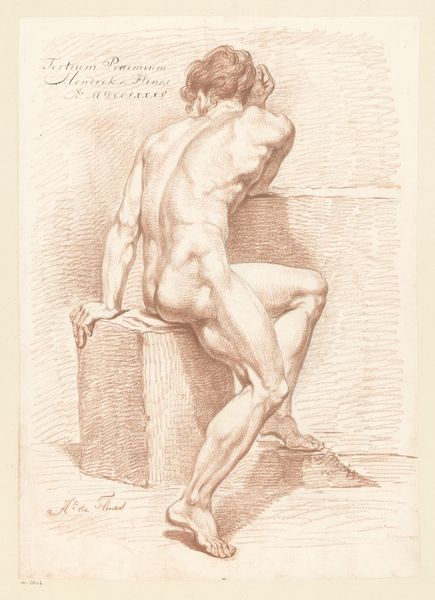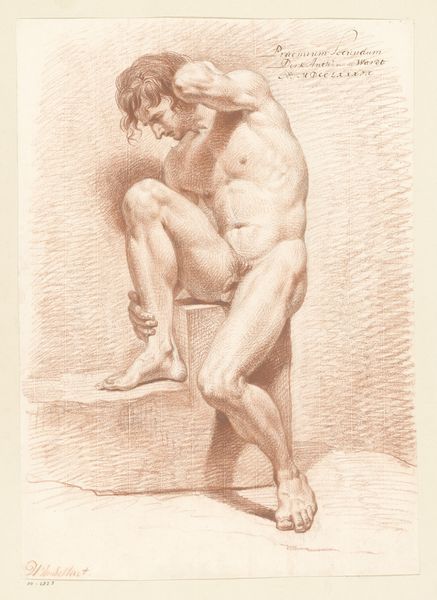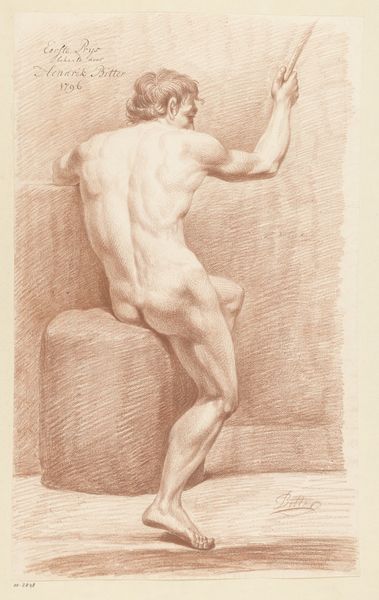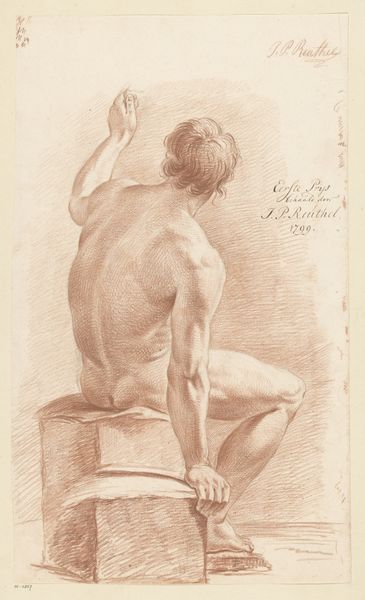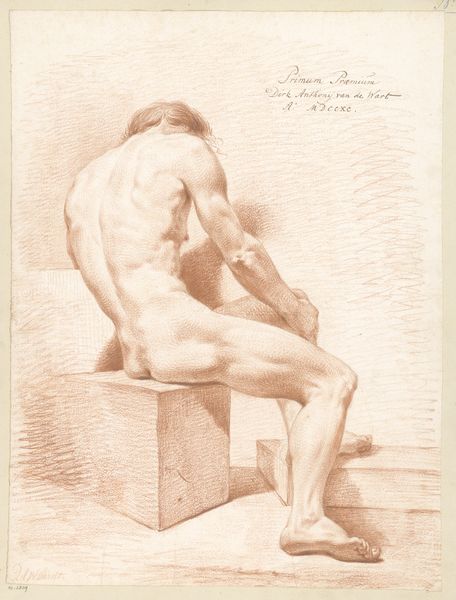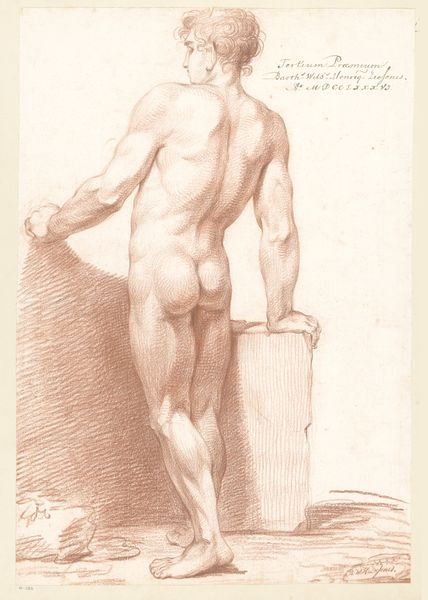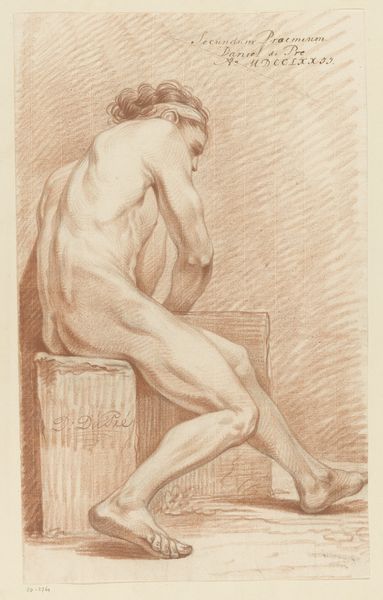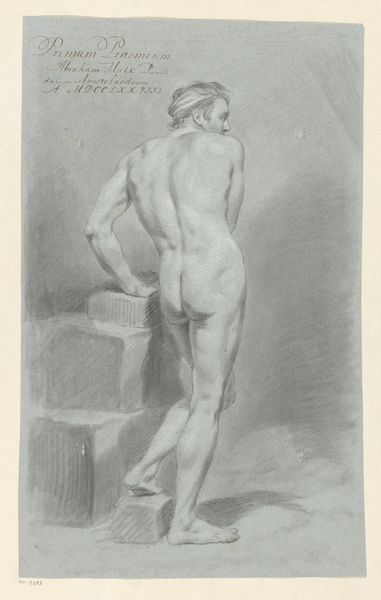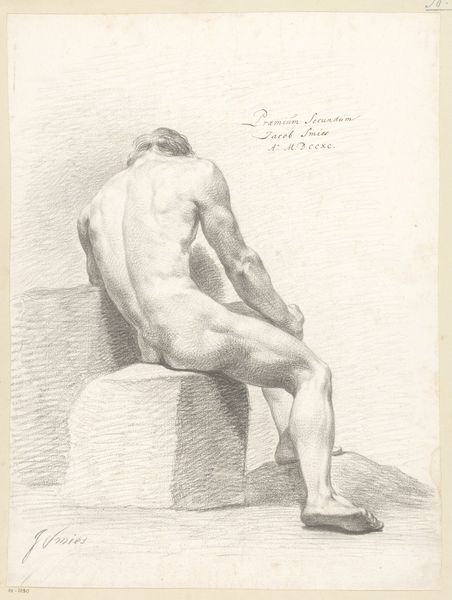
Zittend mannelijk naakt, op de rug gezien (1e prijs 1785) Possibly 1785
0:00
0:00
janbulthuis
Rijksmuseum
#
pencil drawn
#
facial expression drawing
#
light pencil work
#
pencil sketch
#
charcoal drawing
#
portrait reference
#
pencil drawing
#
animal drawing portrait
#
portrait drawing
#
pencil work
Dimensions: height 547 mm, width 340 mm
Copyright: Rijks Museum: Open Domain
Curator: The image we're looking at is titled "Zittend mannelijk naakt, op de rug gezien," or "Seated Male Nude, Seen From the Back," attributed to Jan Bulthuis, possibly dating back to 1785. It appears to be a first-prize winning academic study. Editor: It strikes me as neoclassical but tinged with a certain... melancholy? The muted palette, the figure turned away, head in hand. It’s classically rendered, almost perfect, but feels somehow vulnerable. Curator: Precisely! Nudity in art carries immense symbolic weight, and this pose further amplifies it. This pose reminds us of a melancholic representation. Editor: Given that this was an award-winning academy study, is it possible this image of perfection is meant to be a symbol of an aspirational, perhaps even impossible ideal of the male body in the late 18th century? How complicit were such works in the societal standards of beauty that were often inaccessible and actively oppressive? Curator: A compelling point! I hadn't considered the sociopolitical implications so directly. I had been considering the echo of the Vitruvian Man with an additional air of thoughtfulness. There's a strong element of idealized masculinity presented here, no doubt, but how much is it simply for anatomical understanding versus cultural power dynamics is open to interpretation. The academy reinforced certain norms, yes, but also pushed boundaries in understanding the human form. It has also given rise to ideas on sexuality, gender, class, race, etc. in modern interpretations. Editor: But were those boundaries truly pushed for the betterment of society as a whole, or simply within a restrictive sphere of accepted, dominant narratives? Art institutions weren't—and often aren't—neutral spaces. Even studying the human body became entangled with complex hierarchies and unequal access. Curator: That's definitely something worth continued discourse. This has prompted me to rethink certain perspectives. Editor: Indeed. The visual arts give great possibility for exploration and understanding if one is willing to ask complex, perhaps uncomfortable questions.
Comments
No comments
Be the first to comment and join the conversation on the ultimate creative platform.
